Preventing Vehicular Attacks: Highlights from SIA’s Policy Briefing
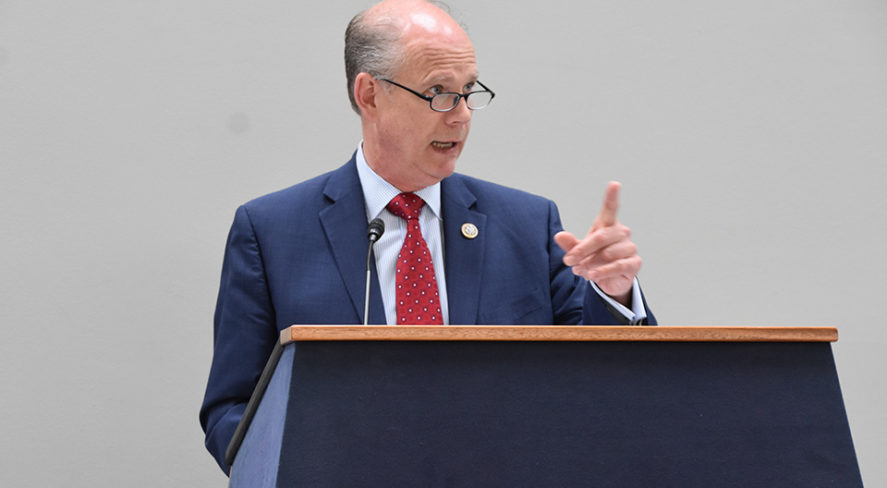
 On May 10, the Security Industry Association (SIA) hosted a policy briefing on Capitol Hill on how safety and security in public spaces can be enhanced through protections for pedestrians and crowds. The briefing, held at the Hart Senate Office Building, was attended by policymakers, federal agency personnel, project designers and other stakeholders and highlighted physical security measures that protect against hostile vehicle attacks and how policies, standards and funding can be coordinated to better protect public spaces.
On May 10, the Security Industry Association (SIA) hosted a policy briefing on Capitol Hill on how safety and security in public spaces can be enhanced through protections for pedestrians and crowds. The briefing, held at the Hart Senate Office Building, was attended by policymakers, federal agency personnel, project designers and other stakeholders and highlighted physical security measures that protect against hostile vehicle attacks and how policies, standards and funding can be coordinated to better protect public spaces.
“The threat is here, it’s real and it’s now,” said Jake Parker, SIA’s director of government relations, kicking off the event. Rob Reiter, co-founder of the Storefront Safety Council and chief security consultant at Calpipe Industries, led the day’s discussions following Parker’s introductory remarks.
“The reality is that this is a situation that’s growing, and it’s a situation that’s compounding,” said Reiter, who also stressed government and industry’s responsibility to work to protect public spaces.
 Autumn Harris, technology integration director at Thornton Tomasetti, provided an overview of recent vehicular attacks in the United States and Europe. Harris discussed the rapid growth in the prevalence of these types of attacks – which can either be tied to terrorism or due to medical reasons, intoxicated drivers, disgruntled employees and/or road rage, weather-related events or other factors – over the past several years. Additionally, she highlighted terrorists’ tendencies to scout their target locations in advance, opting for unprotected areas where large crowds congregate, and the appeal of vehicular attacks with terrorists – including minimal preparation needed, low cost of executing these attacks, low traceability and proven effectiveness.
Autumn Harris, technology integration director at Thornton Tomasetti, provided an overview of recent vehicular attacks in the United States and Europe. Harris discussed the rapid growth in the prevalence of these types of attacks – which can either be tied to terrorism or due to medical reasons, intoxicated drivers, disgruntled employees and/or road rage, weather-related events or other factors – over the past several years. Additionally, she highlighted terrorists’ tendencies to scout their target locations in advance, opting for unprotected areas where large crowds congregate, and the appeal of vehicular attacks with terrorists – including minimal preparation needed, low cost of executing these attacks, low traceability and proven effectiveness.
“Vehicle attacks are simple and effective attack solutions with proven success,” said Harris. “We need to do something to protect people – to be prepared and protect our communities.”
 In the next segment, experts discussed matching countermeasures to the threat of vehicular attacks. Huston Dawson, principal at Thornton Tomasetti, emphasized that “now, the vehicle is the weapon” and highlighted the need to balance risk, cost, open space and design requirements when developing solutions like anti-ram barriers. Dawson discussed vehicle crash testing of barriers, the design of anti-ram and perimeter security, the American Society of Testing and Materials (ASTM) standards for rating these solutions and the challenge in balancing many factors when creating and implementing them.
In the next segment, experts discussed matching countermeasures to the threat of vehicular attacks. Huston Dawson, principal at Thornton Tomasetti, emphasized that “now, the vehicle is the weapon” and highlighted the need to balance risk, cost, open space and design requirements when developing solutions like anti-ram barriers. Dawson discussed vehicle crash testing of barriers, the design of anti-ram and perimeter security, the American Society of Testing and Materials (ASTM) standards for rating these solutions and the challenge in balancing many factors when creating and implementing them.
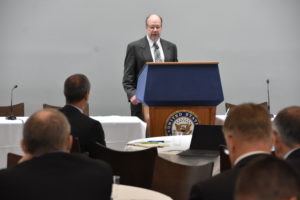 Joe Hugo, technical committee operations at ASTM International, then discussed the standards in more detail and pointed attendees to the Texas A&M Transportation Institute and ASTM’s Committee F12 on Security Systems and Equipment for more information. Additionally, John Scolaro, CEO of Nasatka Barriers, provided an overview of available solutions, including balancing safety and security design considerations, weighing the cost over the life of a solution and the use of tiered solutions.
Joe Hugo, technical committee operations at ASTM International, then discussed the standards in more detail and pointed attendees to the Texas A&M Transportation Institute and ASTM’s Committee F12 on Security Systems and Equipment for more information. Additionally, John Scolaro, CEO of Nasatka Barriers, provided an overview of available solutions, including balancing safety and security design considerations, weighing the cost over the life of a solution and the use of tiered solutions.
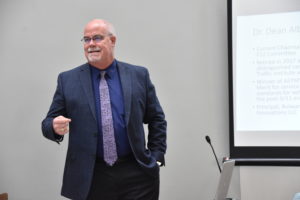 The next discussion – led by Dean Alberson, P.E., Ph.D., Bulwark Design Innovations LLC And Ameristar – highlighted research and development trends in protective devices, including crash testing of bollards, and shared several examples and videos of crash testing with different vehicles and types of barriers. Philip Mattson, director of the U.S. Department of Homeland Security’s (DHS’) Office of Standards and chair of ASTM Committee E54 on Homeland Security Applications, then explored incorporating protection that conforms with DHS standards. Mattson said having standards helps DHS leverage expertise in the private sector, reduce costs and establish operability, compatibility and interoperability, and discussed traditional standards development and DHS’ involvement.
The next discussion – led by Dean Alberson, P.E., Ph.D., Bulwark Design Innovations LLC And Ameristar – highlighted research and development trends in protective devices, including crash testing of bollards, and shared several examples and videos of crash testing with different vehicles and types of barriers. Philip Mattson, director of the U.S. Department of Homeland Security’s (DHS’) Office of Standards and chair of ASTM Committee E54 on Homeland Security Applications, then explored incorporating protection that conforms with DHS standards. Mattson said having standards helps DHS leverage expertise in the private sector, reduce costs and establish operability, compatibility and interoperability, and discussed traditional standards development and DHS’ involvement.
 Bruce Davidson, director of DHS’ Office of SAFETY Act Implementation, presented on the SAFETY Act and its opportunities and current initiatives. Since the SAFETY Act – which provides legal liability protections for providers of qualified anti-terrorism technologies that could save lives in the event of a terrorist act – received its first application in 2003, DHS has approved 989 technologies for SAFETY Act protections, and in the last fiscal year alone 91 technologies were approved. Davidson discussed the criteria for designation under the act, the office’s priority initiatives and its work with industry to help harden “soft targets” for attacks.
Bruce Davidson, director of DHS’ Office of SAFETY Act Implementation, presented on the SAFETY Act and its opportunities and current initiatives. Since the SAFETY Act – which provides legal liability protections for providers of qualified anti-terrorism technologies that could save lives in the event of a terrorist act – received its first application in 2003, DHS has approved 989 technologies for SAFETY Act protections, and in the last fiscal year alone 91 technologies were approved. Davidson discussed the criteria for designation under the act, the office’s priority initiatives and its work with industry to help harden “soft targets” for attacks.
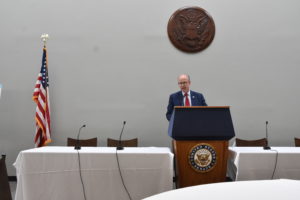 Following these presentations, attendees heard remarks from special guest U.S. Rep. Dan Donovan (R-NY), chairman of the House Homeland Security Subcommittee on Emergency Preparedness, Response and Communications. “Safety and security and are important issues to all of us,” said Donovan. “[Terrorists] haven’t given up, and neither can we.”
Following these presentations, attendees heard remarks from special guest U.S. Rep. Dan Donovan (R-NY), chairman of the House Homeland Security Subcommittee on Emergency Preparedness, Response and Communications. “Safety and security and are important issues to all of us,” said Donovan. “[Terrorists] haven’t given up, and neither can we.”
Donovan discussed the shift in attacks from hard to soft targets (e.g., schools, large events, public spaces) and the need for increased vigilance, shared intelligence and investing in security training and tools. Additionally, he highlighted his work on H.R. 4627, and H.R. 4227, legislation currently being considered pertaining to shielding public spaces from vehicular terrorism. “Unfortunately, it takes something like the van attack in October to make us aware that this is the newest threat,” he said.
H.R. 4227, authored by Representative Bob-Latta (R-OH) and co-sponspored by Donovan, was passed by the U.S. House of Representatives in March, would require DHS to fully assess it activities to support emergency response providers and the private sector to prevent, mitigate, and respond to the threat of vehicular terrorism, and to develop a coordinated strategy. H.R. 4627, authored by Donovan and supported by SIA, would clarify that homeland security grants to states and localities in the U.S. can be issued to address “security vulnerabilities of public spaces, including through the installation of bollards and other target hardening activities,” and tasked the DHS Science and Technology Directorate with conducting “research and development to combat emerging terrorist threats, such as vehicular attacks.”
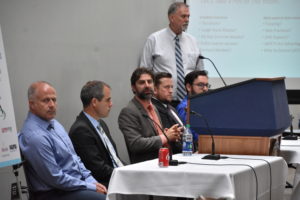 To close the event, Reiter moderated a panel discussion among industry experts on best practices for protecting public spaces. Nathan Wells of Ameristar, Greg Davidson of Calpipe Industries, Jonathan Berry of Marshalls, Scolaro and Anthony Sirolli at FAAC Group discussed the balance between security and safety in developing barriers, providing security solutions for event spaces, funding of security solutions and the processes of threat assessment and engineering that should be completed prior to purchasing security solutions.
To close the event, Reiter moderated a panel discussion among industry experts on best practices for protecting public spaces. Nathan Wells of Ameristar, Greg Davidson of Calpipe Industries, Jonathan Berry of Marshalls, Scolaro and Anthony Sirolli at FAAC Group discussed the balance between security and safety in developing barriers, providing security solutions for event spaces, funding of security solutions and the processes of threat assessment and engineering that should be completed prior to purchasing security solutions.
Thank you to all of our event attendees, speakers and sponsors – Ameristar, Calpipe Industries, FAAC Group, Marshalls and Nasatka Security – for helping make this policy briefing a success!
